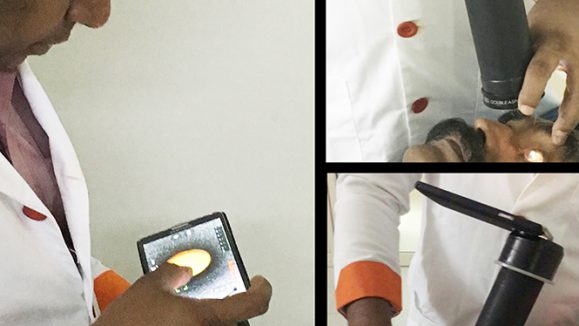Retinal degenerative diseases are a leading cause of irreversible blindness and loss of vision worldwide. And although there have been considerable advances in clinical equipment, pathological analysis and surgical procedures, anatomical and physiological barriers make it difficult to deliver treatment to the posterior segment of the eye in a non-invasive manner. In addition, many retinal diseases are chronic, resulting in a frequent need for treatment at a high cost to the patient.
Various ophthalmological drug delivery systems (DDS) targeting the retina have been developed, and below, we explore current treatments available for clinical use, as well as other devices in various stages of trials.
The Current DDS Landscape
Ophthalmologists have various DDS options to treat retinal diseases – each with its pros and cons. Conventional treatments like topical installation (of intraocular pressure lowering agents) and intraocular injections (of anti-VEGF agents) are often the standard of care for some diseases – but they are not without complications. Poor patient compliance and successful drug delivery to the posterior segment, are the two biggest obstacles for topical installation. Intraocular injections have their own set of complications: they are invasive; they can cause serious complications; and repeated injections are often necessary.
There are also various intraocular and periocular implant DDS in clinical practice and trials. Intraocular implants have the ability to entrap and release drugs over a period of time, which may lower the frequency of surgery in some patients, while periocular implants allow for localized delivery of drugs and are less invasive than intravitreal administration – making them a viable and attractive option for treating retinal disease.
Coming Soon: The Latest in DDS
The ideal DDS device for treating retinal degenerative diseases would deliver drugs to target sites in a noninvasive manner to maximize therapeutic outcomes and minimize side effects.Below we explore the new wave of DDS devices – including refillable devices, micro electro mechanical system (MEMS)-based devices, cell-based bioreactors, and self-deploying devices – most of which are currently undergoing clinical or preclinical trials.
Refillable Devices
Refillable devices, like the port delivery system developed by ForSight Vision4 Inc. (Menlo, CA, USA) require a surgical procedure but can be used over several years without additional surgeries. Like the scleral plug, the port DDS is placed through the pars plana on the outside of the sclera and delivers drugs into the vitreous cavity through a small tube reservoir. This particular device was designed to deliver ranibizumab over a period of months, and is easily refilled in an office setting. It is currently in clinical trials.
Another refillable device, which is intended for implantation into the lens, is in the preclinical phase. In this device, bevacizumab is loaded with a PVA matrix and release is controlled through a semi-permeable membrane on the side, with silicone check valves to refill the reservoir. In addition, because of its placement in the lens, this DDS could deliver drugs to both the anterior and posterior segment of the eye (depending on the device orientation).
Micro Electro Mechanical System (MEMS)
Another refillable device uses MEMS technology and an active drug delivery pump. When a drug dose is required, an electrical current is passed between electrodes, and the gas generated by electrolysis of the water increases the pressure in the reservoir to push the drug solution out through the cannula and into the eye. Further testing will reveal if this approach could enhance drug delivery to the posterior segment of the eye. In addition, implant devices equipped with electrodes and power sources might also be applicable to electrical stimulation therapy in ophthalmic diseases, which has emerged as a potential neuroprotective strategy.
Cell-Based Bioreactors
A living cell is a highly efficient bioreactor and any gene encoding a therapeutic protein can now be engineered into cells. Renexus (formerly NT-501), developed by Neurotech (Cumberland, RI, USA) is a human RPE cell line that is genetically modified to secrete ciliary neurotrophic factor (CNTF). The engineered cells are encapsulated into semipermeable capsules that facilitate the diffusion of nutrients and proteins, but prevent attack by the host immune system. This capsule device is surgically implanted into the vitreous body through a tiny scleral incision and is anchored by a single suture. Several clinical trials using the device have been conducted.
Self-Deploying Devices
Another DDS being explored is a self-deploying device that uses the transscleral route by subconjunctival or subtenon injection. Transplanting a self-deploying device in a less invasive manner could be possible with the use of a flexible sheet-type device that can unfold in the body and attach to tissue surface following injection from a needle. For example, the nanoporous film device, with its thin film, can be furled to fit inside and then deployed by a syringe. However, when administering drugs through the transscleral route, self-deployment and tight attachment of the device on the sclera following injection from a syringe would be favorable to facilitate drug diffusion to the retina, while reducing drug elimination by conjunctival clearance.
As has been reviewed by Kaji and colleagues*, there are numerous DDS options for physicians treating retinal degenerative diseases – some of which are already available, while others are in clinical trials or being investigated. As we search for the ideal DDS for the posterior segment, combining new technology, like MEMS and cell encapsulation, with current devices (like periocular implants) would be optimal to increase the bioavailability of released drugs. In addition, developing devices that can be implanted in a less-invasive manner should also be an important objective.
Reference:
*Kaji H, Nagai N, Nishizawa M, Abe T. Drug delivery devices for retinal diseases. Adv Drug Deliv Rev. 2017; S0169-409X(17)30099-6. [Epub ahead of print]



